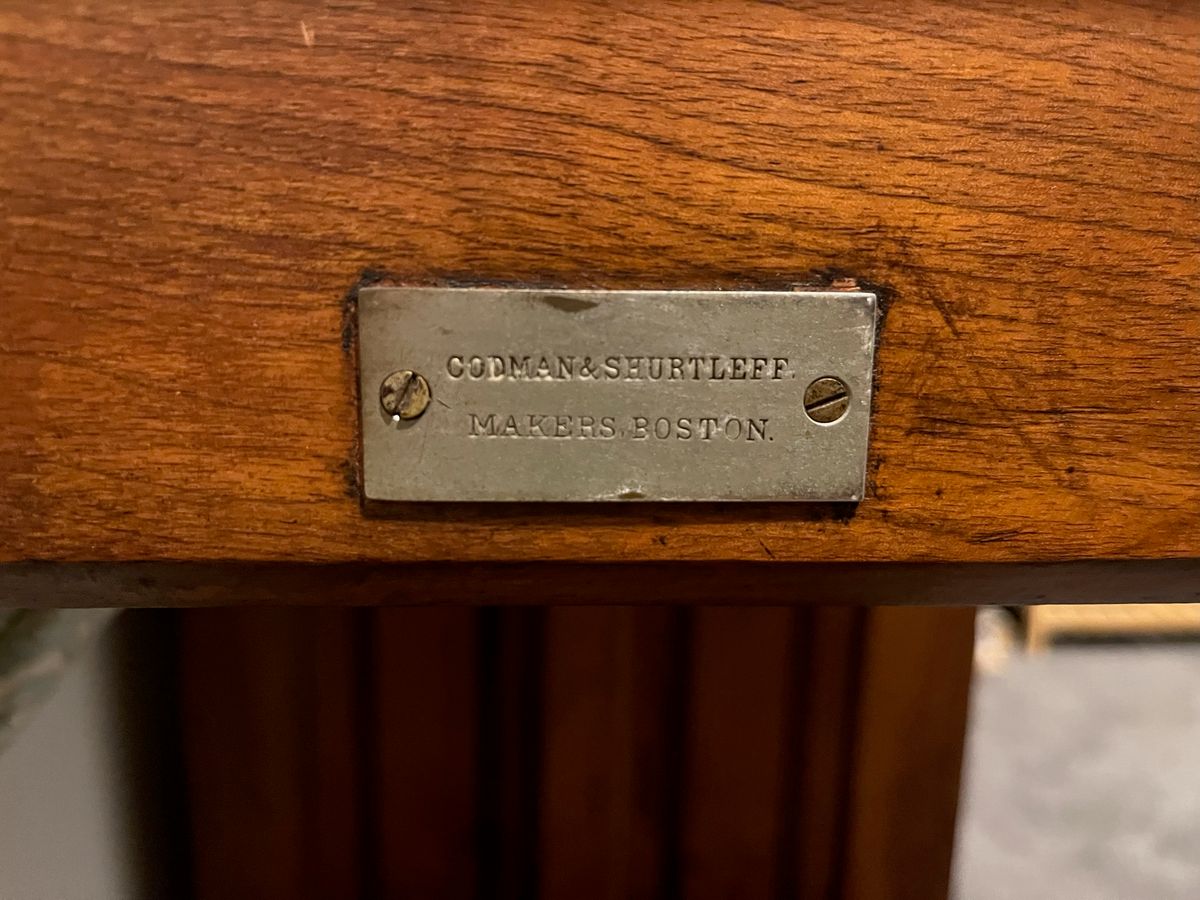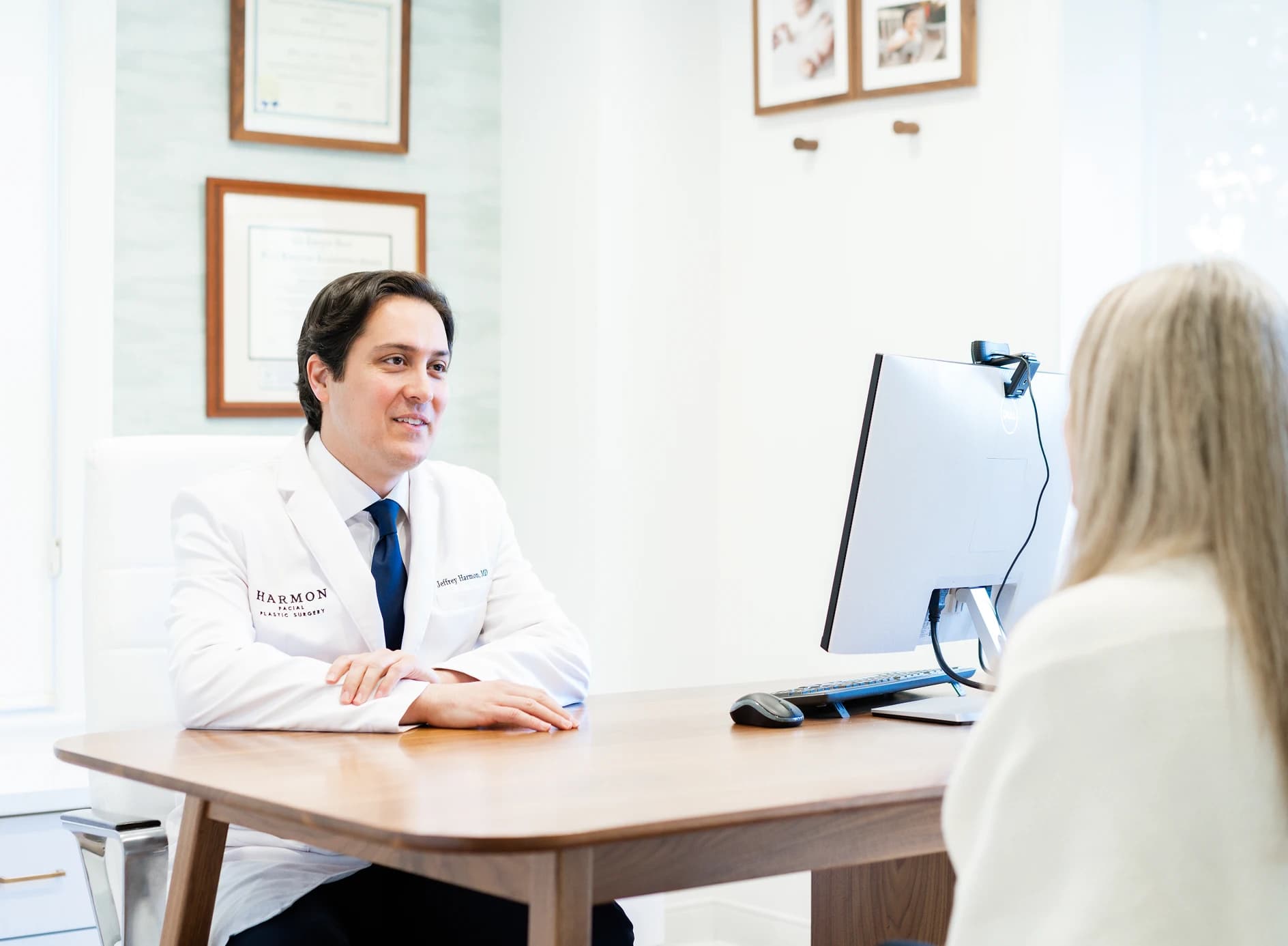A Piece of Medical History Fell into My Possession Under Strange Circumstances

I inherited a physician examination table from my mother’s family when I graduated from medical school. The table was a strange inheritance because there are no other physicians in my family. My mother explained that it was found in the attic of one of my great grandparents’ homes in rural Central Kentucky. It is not clear how the table wound up in my mother’s possession. It would become clear years later, however, that it is a historical piece fit for a museum. It is important to seek not only a fellowship-trained but also a double board-certified facial plastic surgeon if you have aesthetic concerns about your face and/or neck.
I Inherited a Very Old Physician Exam Table Despite Having No Physician Relatives
The table is in moderately good shape for its – obviously old – age. It is broken off the larger base and the table itself has a long narrow fracture. Otherwise, it is intact. The wood is solid walnut. The drawers contain holders for small cylindrical vials. The metal handles of the drawers are intricately decorated with floral patterns, evoking a Belle Epoque attention-to-detail that has long been lost in the design of medical offices. Stirrups extend from an opening at the top of the base. A secret compartment at the back of the bottom drawer contains a wired barrier, the purpose of which is unclear.
I imagine the local town general practitioner gave the table to my great grandparents after a long career caring for the local population, going on house calls, administering tinctures, and delivering babies. My grandmother described her experience with a similar practice as recently as my mother’s childhood.
I thought little of the table for years until the end of residency when my wife and I considered sending it to a carpenter for restoration. I found a reputable carpenter and emailed him, described the table, and asked for an approximate cost to repair. I explained that I believed the table was made in the early 1900s. He requested photos. The carpenter called me within only a few hours of emailing him the photos. He explained that, in fact, this table was likely made in the 1800s, possibly even during the Civil War, based on its appearance. The only clue I had to its age was a metal tag with the company name, Codman & Shurtleff Makers Boston, screwed to the side of the table.
Codman & Shurtleff Makers Boston was Founded in the mid-1800s
Information on Codman & Shurtleff Makers Boston is difficult to find and consists mostly of antique surgical instrument sales online. A quick scan of eBay found an example of the patented steam atomizer as well as Civil War-era dental instruments and a syringe.
The most detailed company profile available is from a letter sent to a “Mr. Shurtleff” – of the original Shurtleff family, I assume – from the Product Coordinator of a subsidiary company to Johnson & Johnson:
“In 1838, a mechanic in Roxbury, Massachusetts, designed a Pocket Cupping instrument for the application of Ether. The enthusiastic response of the Boston medical community encouraged Thomas Codman to apply his talents to crafting a number of medical and surgical items. Hence, the origins of Codman & Shurtleff, Inc. were well rooted in medical device innovation. Thomas' son Benjamin, graduated from Harvard Medical School in 1845. After purchasing the entire stock of dental supplies from druggist Joseph Burnett, Dr. Codman opened his Dental Depot on Tremont Street. Later, in 1853, he took Asahel Shurtleff on as his assistant and added surgical instruments and anatomical supplies to the line, establishing the Benjamin S. Codman & Company. In 1857, he was joined in partnership by Shurtleff and F.O. Whitney, and Codman & Shurtleff was established. Its line of medical, surgical, dental and veterinary instruments and supplies became more extensive; ear, nose, and throat instruments became a major portion of the business. With an increasing demand for a variety of atomizers used in the treatment of respiratory diseases, the Company began to produce its Patented Steam Atomizer in 1860. This product was an international best seller for over 20 years. During the same period, the Company introduced its General Surgery and Amputation Set, it designed to be used on the battlefield by Army surgeons during the Civil War. As a result, the Company prospered and its reputation grew significantly. Dr. Codman's death in 1894 dissolved the partnership and placed the Company into receivership.”

The Shurtleff family reportedly purchased the assets of the company and re-incorporated into Codman and Shurtleff, Inc. in 1904. This fits the timeline that carpenter gave me that the table was likely made in the 1800s, as the tag on the table refers to the original Codman & Shurtleff Makers Boston company that was formed prior to its dissolution in 1894. As a result, my research suggests the physicians table was manufactured between 1857 and 1894.
The Dilemma: to Preserve or Restore
The Department of Otolaryngology – Head and Neck Surgery at the University of Cincinnati Medical Center, where I completed my residency training, has a beautiful collection of antique ear, nose, and throat (ENT) instruments, most of which were donated by an alumnus of the residency program. I have wondered whether any of those ENT instruments were produced by Codman & Shurtleff Makers Boston, who gained a reputation producing instruments for the specialty. I have also wondered whether the table I inherited should sit behind glass windows in the department as well.
The carpenter who evaluated the piece explained that there are two trains of thought regarding antique wood furniture. Some feel preservation is ideal, especially if we plan to donate the table to a museum. However, he recommended full restoration of the table. He explained it is worth displaying it in our home due to its history and personal meaning.
My conversation with the carpenter was eight years ago. The table has moved with us from Cincinnati to New York City and back. We once considered selling it, believing the table would be useless in our house. However, we have grown to appreciate its meaning over time, due both to its historic and family value. It also fits with my interest in the history of medicine, of which I have written about on the blog previously. My wife and I now plan to fully restore this table and display it prominently in our house, a symbol of my life’s calling and a connection to my extended family, however foggy.
Trust Your Face to a Facial Plastic Surgeon
It is important to seek a fellowship-trained specialist in plastic surgery of the face and neck when you have concerns about your face or neck.
Why Choose Dr. Harmon
- The mission of Harmon Facial Plastic Surgery is to help people along their journey towards self-confidence, to feel good about feeling good.
- Dr. Harmon is a double board-certified facial plastic surgeon
- Dr. Harmon values making patients feel welcomed, listened to, and respected.
- Dr. Harmon graduated with honors from Cornell University with a Bachelor of Science degree in molecular biology.
- Dr. Harmon earned his medical degree from the University of Cincinnati.
- Dr. Harmon underwent five years of extensive training in head at neck surgery at the prestigious residency program at the University of Cincinnati.
- Dr. Harmon then underwent focused fellowship training in cosmetic facial plastic surgery through the American Academy of Facial Plastic and Reconstructive Surgery (AAFPRS) with the world-renowned surgeon, Dr. Andrew Jacono, on Park Avenue in New York City.
Request a Consultation
Request a consultation with Dr. Harmon at Harmon Facial Plastic Surgery in Cincinnati. Visit our clinic. You will learn more about Dr. Harmon’s credentials, style, and approach. Build a relationship with our dedicated team. Do not stop searching “plastic surgery near me.” Get in touch with us to learn more.
Disclaimer
This blog post is for educational purposes only and does not constitute direct medical advice. It is essential that you have a consultation with a qualified medical provider prior to considering any treatment. This will allow you the opportunity to discuss any potential benefits, risks, and alternatives to the treatment.

Book Your Consultation
Take the first step toward enhancing your natural beauty by scheduling a personalized consultation with Dr. Jeffrey Harmon. As a double board-certified facial plastic surgeon trained by the pioneer of the extended deep plane facelift, Dr. Harmon offers expert guidance and care. Whether you're considering surgical or non-surgical options, our team is here to support your journey to renewed confidence.